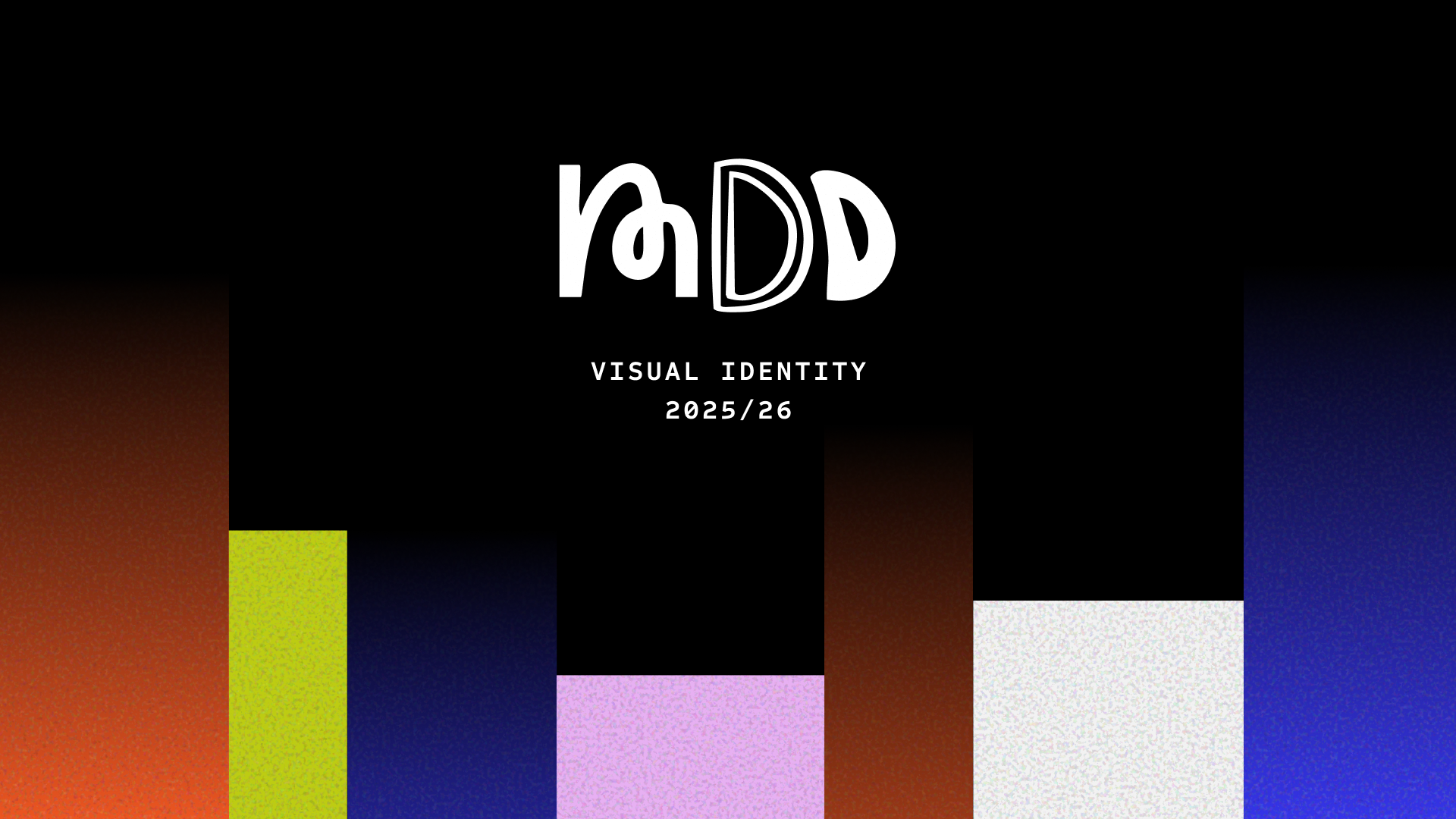Co-design for societal impact: things we have learnt so far
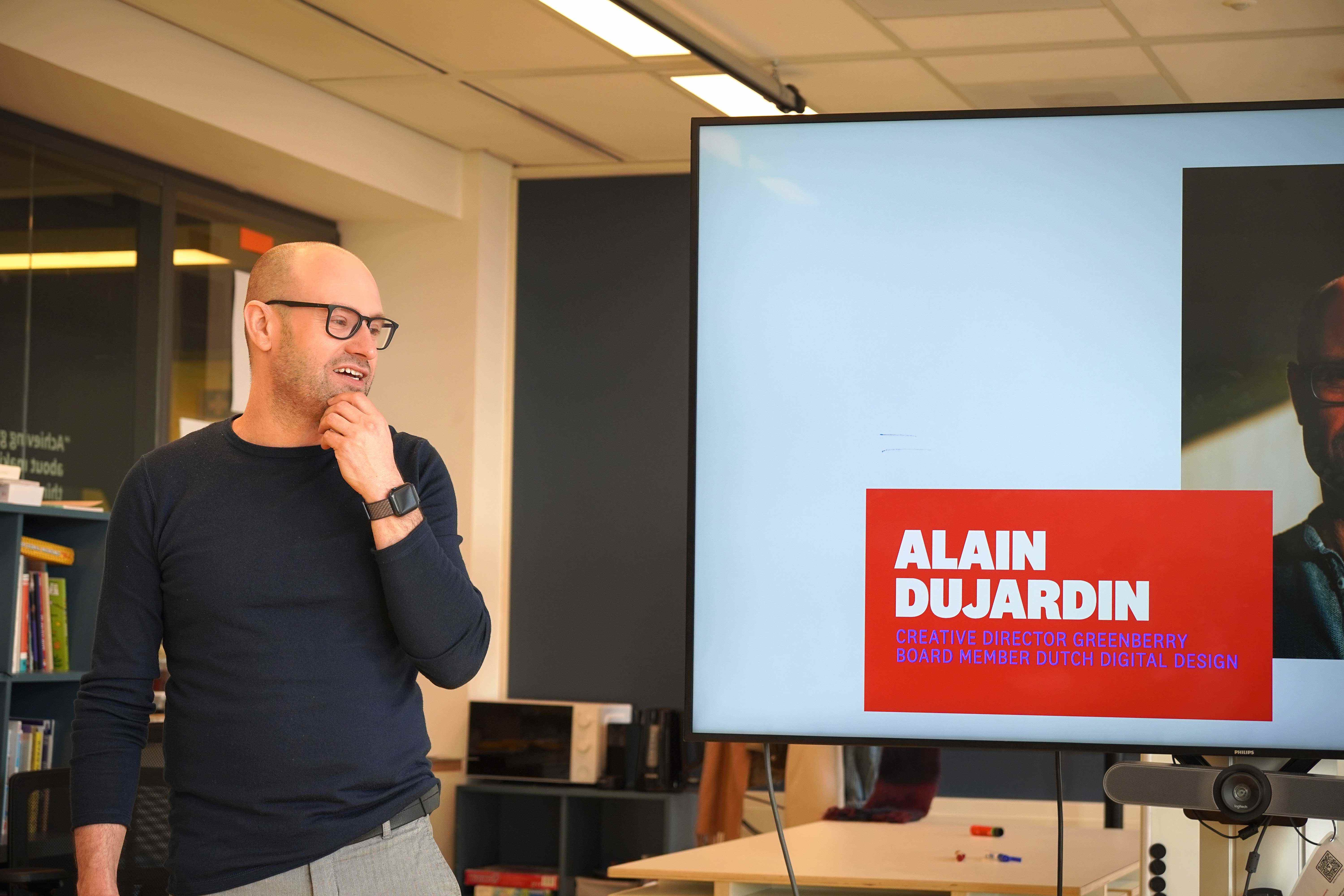
At the Master Digital Design, we often welcome guests from the field to share their expertise with our students. Alain Dujardin is creative director and partner of Greenberry, one of our partner agencies, and a leading Dutch studio in co-design and design accessibility. In this article, he explores some of the insights he shared with our students recently.
Every now and then, I have the opportunity to share our experiences on co-design with the students of the Master Digital Design. With Greenberry, we focus on creating digital design for societal impact. Projects that range from improving health care to supporting mental health initiatives, always with a focus on creating positive change. And in this field of digital design for impact, where technology meets design, co-design is a powerful approach.
How to make a difference?
‘We cannot solve our problems with the same thinking we used when we created them.’ This famous quote by Albert Einstein sums up the challenges in designing for the ‘wicked’ societal problems we are faced with. The essence of co-design lies in its collaborative nature, involving users directly in the design process. At Greenberry, we believe this approach is crucial for designing solutions that are inclusive and user-centred.
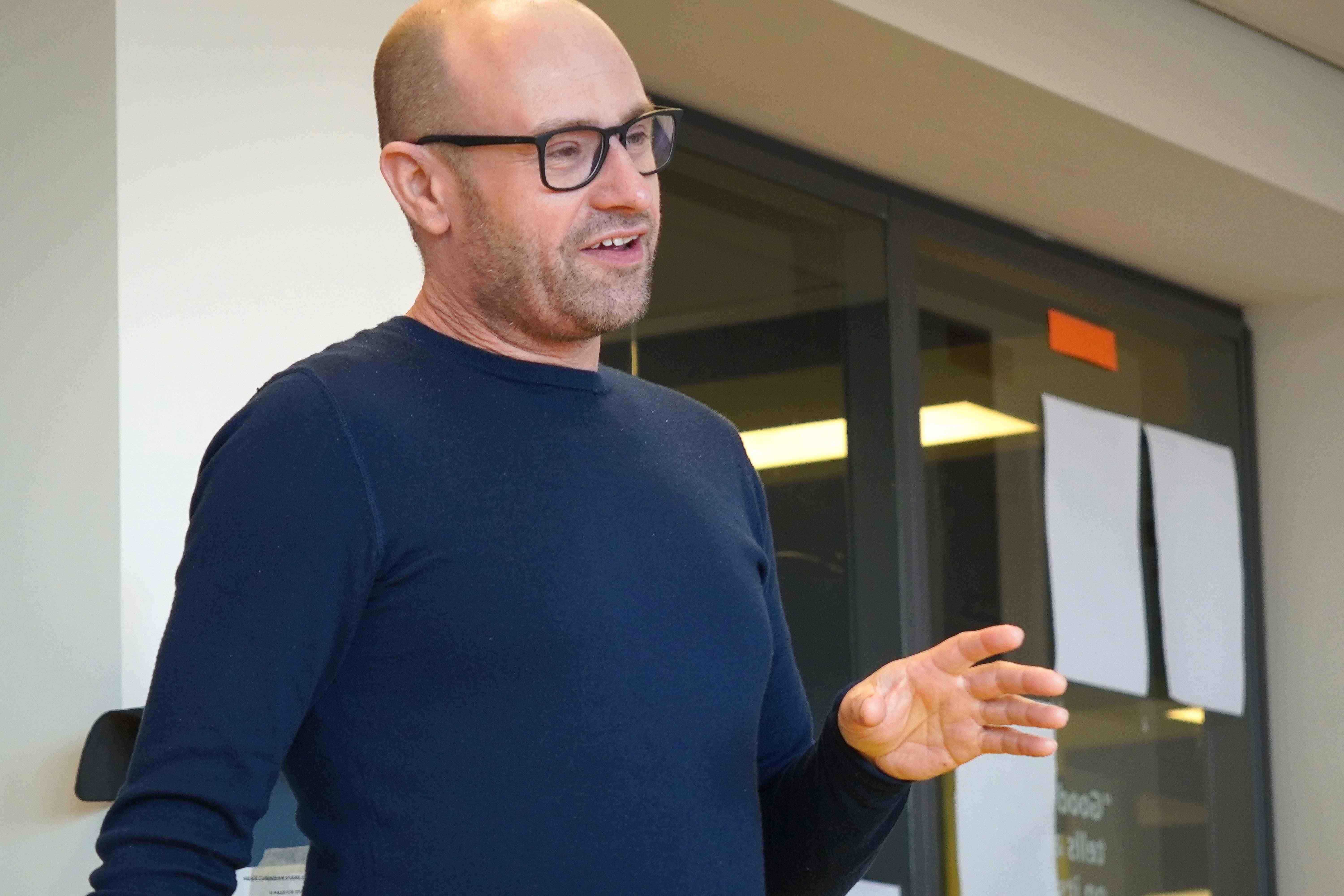
A compass guiding you through complexity
When working on complex societal challenges, co-design is not just helpful; it’s essential. It serves as a compass, guiding us through the systemic complexities. Problems that seem unsolvable are approached by using creative methodologies and broken down into smaller pieces. A secondary benefit is that the process unites people. By bringing problem owners (we prefer not to use the term "client"), actors (avoiding the term "stakeholders"), designers, and experienced experts together in one room, barriers are dropped, and new ideas are born.
Things we have learnt so far…
In our industry, we have a tendency to share our success stories. And yes, I plead guilty: I have shared pictures of us winning awards and shiny case videos. In my master's talk for the students, I wanted to show the unpolished behind-the-scenes story of some of our projects. Our learnings. Pitfalls. I'm a big fan of Stefan Sagmeister's work; he has made it his life's work to share his personal learnings, such as 'Helping other people helps me,' 'Having guts always works out for me,' and 'Being untruthful always works against me.' These quotes have inspired me for many years.
So, loosely inspired by Sagmeister, during my talk I shared the ‘things we have learnt so far… on co-designing for societal impact’. Here we go.
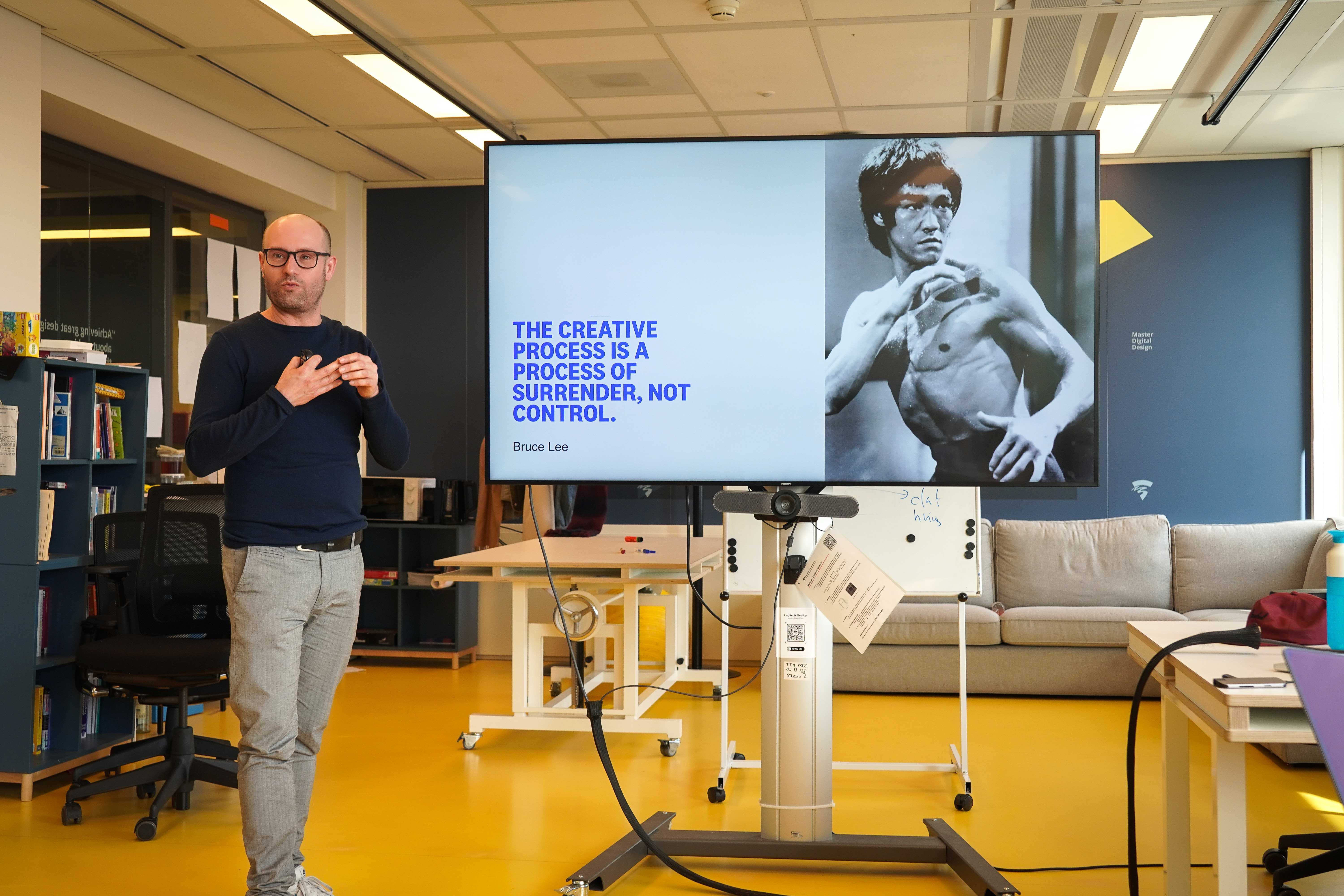
1) Listening brings more to design than talking ever could. The core essence of co-design is simple - talk less, listen (and observe) more. Every hour we spend talking about the people we’re designing for should be spent designing with these people. Get as close as you possibly can, and listen. For a project we did around eating disorders, we spent two days in the hospital listening and writing up the stories, talking to parents. Students often ask me: but we can’t get access. But mostly, they have not been trying hard enough. There are a million reasons why you can’t co-design with a specific group; find that one reason why you can. That takes persistence.
2) Diverse voices craft colourful ideas. Inclusion is at the heart of impactful co-design. It is about bringing a wide variety of perspectives together. These different viewpoints lead to different kinds of ideas. During a project aimed at preventing weapon incidents for the City of Amsterdam, a variety of perspectives enriched our understanding and creativity. By bringing together social workers, street coaches, project leaders, and police officers, we fostered an environment where every voice could contribute to the solution. Through co-creation, we developed "Look Back": an interactive tool that allows the team to retrospectively map out incidents of violence. A concept that would have never seen daylight without the co-creation of all these diverse voices.
3) Always design your research methods. Co-design and design research can be done in so many ways. We always try to adopt creative methods, so we ensure our research triggers curiosity and is flexible to any environment. In a project with the City of Utrecht, we formed the "Krijtclub" to engage directly with children and parents in playgrounds using sidewalk chalk. This approach not only strengthened community connections but also allowed us to engage with parents whom we wouldn't have met had we only conducted interviews. As designers, we have the ability to 'design' our research in a creative way. So, force yourself to also design your research methods.
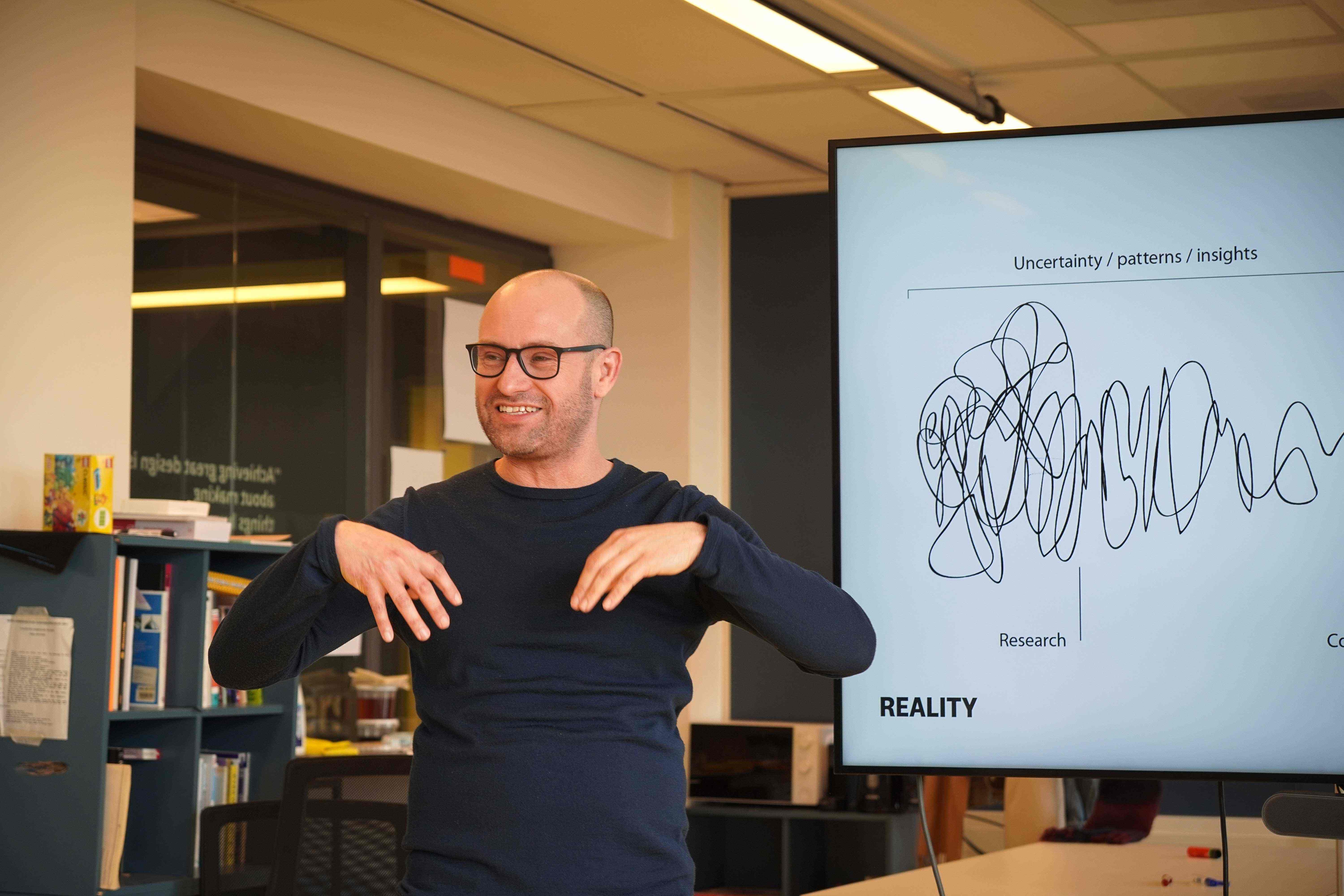
4) Feedback is a rhythm that guides you. Co-design (and co-research) brings together people with different viewpoints and skills to collaborate on complex innovations. At each step in the design process, you receive feedback on your assumptions, insights, ideas, and prototypes. When addressing complex social challenges, this continuous feedback loop is crucial. Think of feedback as a rhythm that moves the design process forward. When developing the Feelee app, an app for mental resilience for youngsters, we incorporated feedback at every step: interviews, co-design sessions, prototype tests, and fake door tests. In total, thousands of youngsters have been involved in the design in some way. One of Stefan Sagmeister’s learnings sums this one up quite good: ‘Assuming is stifling’.
5) Accept empathy has its limits. While empathy is a powerful tool for understanding needs, we must acknowledge that our ability to fully understand others' experiences has its limits. This is particularly true when dealing with delicate matters such as eating disorders, where it can be difficult not to feel overwhelmed or feel the urge to solve someone's problem right away. Once you've entered their world and achieved emotional resonance, it's crucial to 'detach.' ( "Four phases of empathy" by M. Kouprie and F. Sleeswijk Visser). This step, though difficult, is essential to protect your own mental well-being as a designer.
Of course, this is just a selection of our learnings over the last decade I shared in class. We’re learning with every project and every day. So, I am curious: what have you learnt about co-designing and what would you add?

